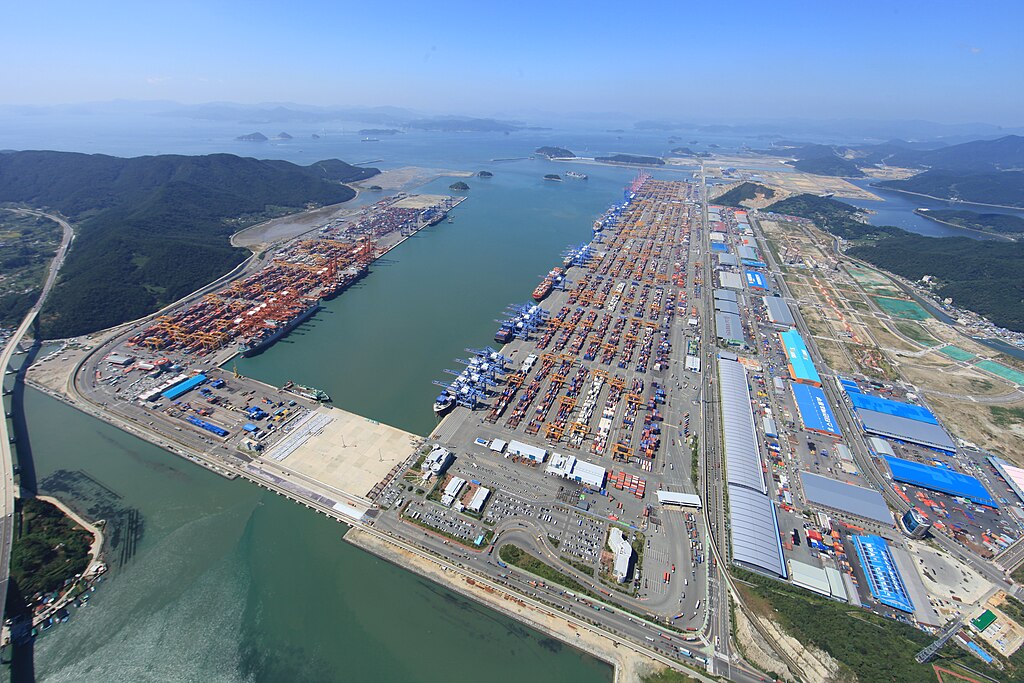South Korea's exports likely grew for the second straight month in March, driven by strong semiconductor demand, according to a Reuters poll of nine economists. Outbound shipments from Asia’s fourth-largest economy are projected to have risen 3.5% year-on-year, following a revised 0.7% increase in February.
Despite favorable calendar effects, February exports saw only modest gains as demand from key markets like China weakened amid escalating global trade tensions. U.S. President Donald Trump’s tariffs—targeting Chinese goods, steel, and aluminum—have added uncertainty. Further pressure looms as new auto tariffs take effect next week, and potential duties on chip imports are being considered.
Park Sang-hyun of iM Securities warned that the implementation of reciprocal tariffs starting April could stall export growth. Chun Kyu-yeon of Hana Securities noted that South Korea may be included in the "Dirty 15" list of nations with persistent trade surpluses, further increasing downside risk.
Data from the first 20 days of March showed a 4.5% rise in exports, with semiconductor shipments jumping 11.6%. Exports to the U.S. and EU increased, while those to China declined. SK Hynix, the second-largest memory chipmaker after Samsung Electronics, reported that customers were accelerating orders ahead of anticipated tariffs on semiconductors.
Imports are expected to have grown 2.3% in March, up from February’s 0.2%. The trade surplus is forecast at $6.06 billion, widening from $4.15 billion a month earlier.
As the first major exporting nation to release monthly trade data, South Korea is set to publish its March figures on April 1 at 9 a.m. KST. Despite export gains, concerns remain over the impact of ongoing global trade friction on future performance.



 U.S. Dollar Steadies Near October Lows as Rate Cut Expectations Keep Markets on Edge
U.S. Dollar Steadies Near October Lows as Rate Cut Expectations Keep Markets on Edge  Wall Street Futures Slip as Tech Stocks Struggle Ahead of Key US Economic Data
Wall Street Futures Slip as Tech Stocks Struggle Ahead of Key US Economic Data  U.S. Dollar Slips Near Two-Month Low as Markets Await Key Jobs Data and Central Bank Decisions
U.S. Dollar Slips Near Two-Month Low as Markets Await Key Jobs Data and Central Bank Decisions  Asian Currencies Trade Sideways as Dollar Weakens Ahead of Key U.S. Data
Asian Currencies Trade Sideways as Dollar Weakens Ahead of Key U.S. Data  Japan PMI Data Signals Manufacturing Stabilization as Services Continue to Drive Growth
Japan PMI Data Signals Manufacturing Stabilization as Services Continue to Drive Growth  Dollar Struggles as Markets Eye Key Central Bank Decisions and Global Rate Outlooks
Dollar Struggles as Markets Eye Key Central Bank Decisions and Global Rate Outlooks  Asian Fund Managers Turn More Optimistic on Growth but Curb Equity Return Expectations: BofA Survey
Asian Fund Managers Turn More Optimistic on Growth but Curb Equity Return Expectations: BofA Survey  Bank of Korea Downplays Liquidity’s Role in Weak Won and Housing Price Surge
Bank of Korea Downplays Liquidity’s Role in Weak Won and Housing Price Surge  New Zealand Budget Outlook Shows Prolonged Deficits Despite Economic Recovery Hopes
New Zealand Budget Outlook Shows Prolonged Deficits Despite Economic Recovery Hopes  Asian Stocks Slide as Central Bank Decisions and Key Data Keep Investors Cautious
Asian Stocks Slide as Central Bank Decisions and Key Data Keep Investors Cautious  South Korea Warns Weak Won Could Push Inflation Higher in 2025
South Korea Warns Weak Won Could Push Inflation Higher in 2025  Gold and Silver Prices Dip as Markets Await Key U.S. Economic Data
Gold and Silver Prices Dip as Markets Await Key U.S. Economic Data  Trump Orders Blockade of Sanctioned Oil Tankers, Raising Venezuela Tensions and Oil Prices
Trump Orders Blockade of Sanctioned Oil Tankers, Raising Venezuela Tensions and Oil Prices  Asian Stocks Slide as AI Valuation Fears and BOJ Uncertainty Weigh on Markets
Asian Stocks Slide as AI Valuation Fears and BOJ Uncertainty Weigh on Markets  Bank of Japan Poised for Historic Rate Hike as Inflation Pressures Persist
Bank of Japan Poised for Historic Rate Hike as Inflation Pressures Persist  Asian Technology and Chipmaking Stocks Slide as AI Spending Concerns Shake Markets
Asian Technology and Chipmaking Stocks Slide as AI Spending Concerns Shake Markets 




























